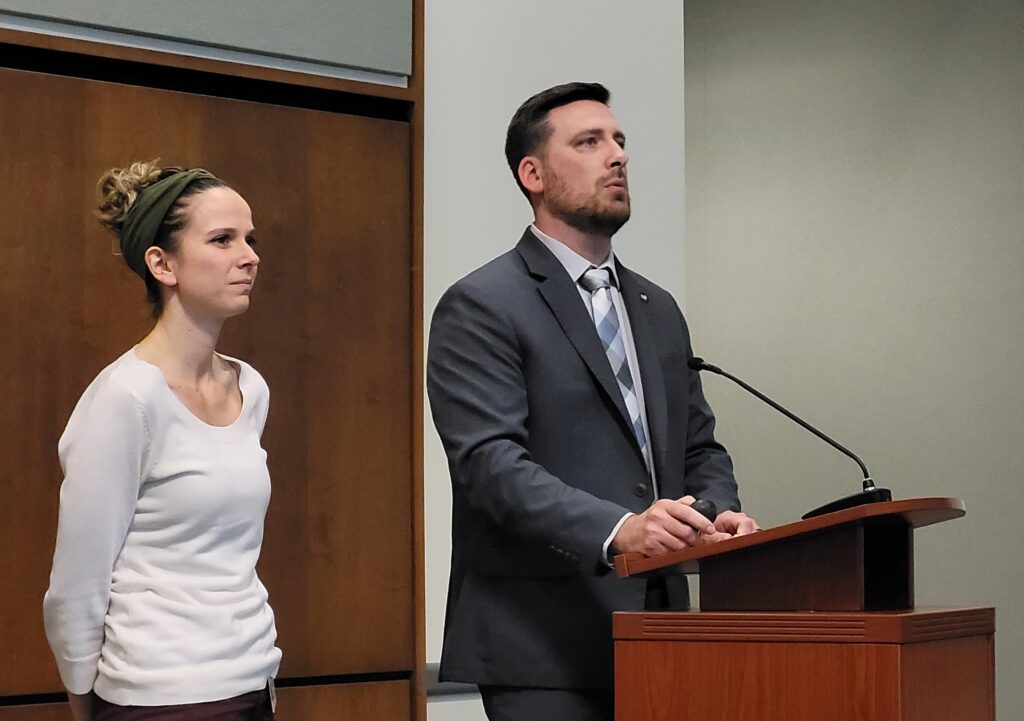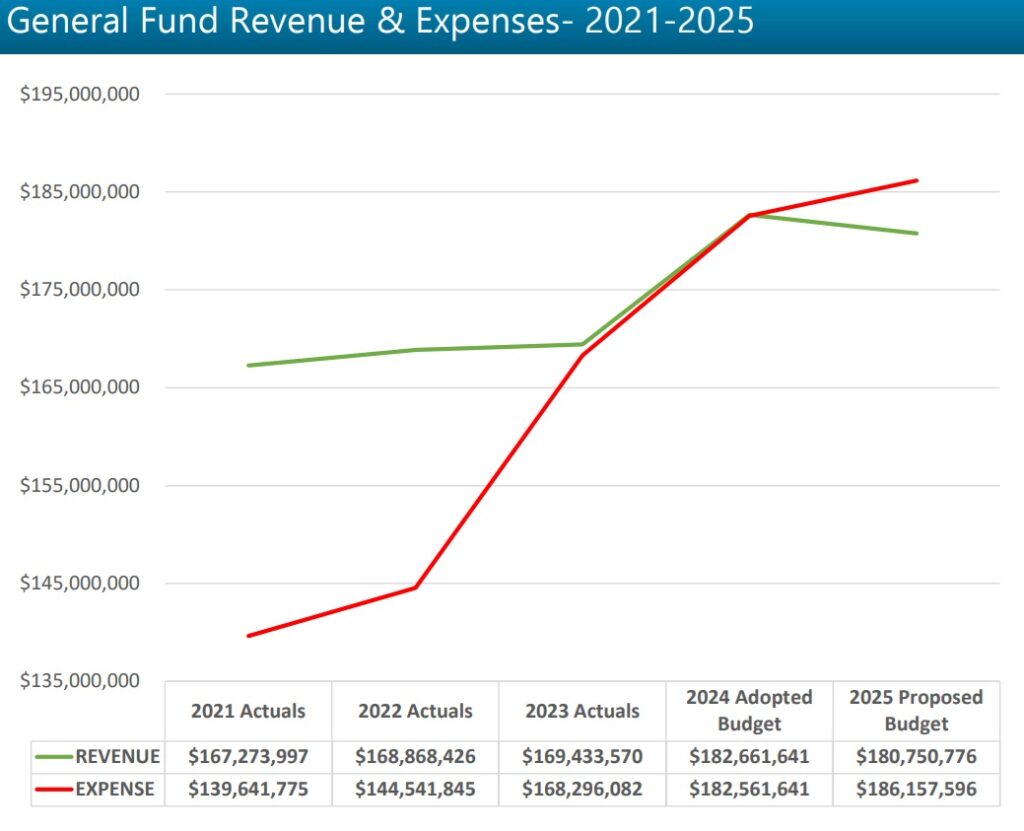
“Expenses are catching up to us,” Lancaster County Director of Budget Services Paul Landers said.
On Tuesday, Landers presented an overview of the proposed 2025 budget at the county’s annual evening budget meeting. It would keep real estate tax rates unchanged for the 12th straight year but would dip modestly into reserves to cover a shortfall in revenues.
The commissioners are scheduled to vote on the budget next Wednesday, Dec. 11.
- Previous coverage: County to introduce 2025 draft budget
Commissioners Josh Parsons and Ray D’Agostino said the budget is responsible and prudent, and a significant accomplishment given the headwinds the county is facing. It has been hit hard by inflation, they said, which they blamed on federal policy decisions.
The county’s real estate tax rate, 2.911 mills, is the third lowest in Pennsylvania and the lowest of any county over 500,000 population. Real estate taxes and delinquent collections are projected to generate $130.1 million of $180.75 million in total general fund revenue.
Operating expenditures are projected at $186.16 million, yielding a deficit of $5.4 million. That would be covered by drawing down reserves from $69.16 million to $63.75 million.

Major cost drivers include employee compensation (up $3.9 million) prison inmate health care and other contracted services (up $3.7 million) the matching funds the county must provide for incoming grants (up $2.9 million) and health benefits (up $1.7 million).
The largest budget decrease is in debt service (down $3.8 million). The county has been paying off and restructuring debt in anticipation of constructing its new correctional facility.
Over the next year, senior administrators will conduct an in-depth review to ensure operations are as efficient as possible and that the county is not spending money on activities outside its purview, D’Agostino said.
At $63.75 million, the county reserves are still a comfortable $18 million above the minimum set in county policy, he noted.
As a cost saving measure, the budget anticipates a four-month hiring freeze. That would require approval by the county Salary Board, and would likely be implemented at the start of 2025, Parsons and D’Agostino said.
For more information
The county’s proposed 2025 budget, Budget Services Director Landes’ presentation and other materials are available on the county’s Budget & Financial Information web page.
‘Band Aid approach’
Commissioner Alice Yoder, the sole Democrat, agreed the county faced difficult fiscal challenges, but was more critical of the choices made in the budget. When all is said, it has a structural deficit, she said, and that’s unsustainable in the long run.
“This is a Band-Aid approach,” she said. Going forward, she said the county should begin doing 3- to 5-year budget projections, calling it “normal, prudent practice.”
Besides drawing on reserves, the budget uses $3.3 million in one-time American Rescue Plan Act funds as revenue replacement, she noted.
Former commissioner John Trescot asked several questions, including whether interest earned in 2024 was being shifted to 2025, and why a line item for insurance was decreasing from just over $1 million to less than $36,000.
Treasurer Amber Martin confirmed that yes, $3.6 million in interest was being moved from 2024 to 2025 to help close the budget gap. After the meeting, budget officials said the insurance line item had been shifted to the county’s capital budget.
Randy Gockley, former director of the Lancaster County Emergency Management Agency, asked the commissioners to fund two instructors to provide firefighter training to local fire departments at the Public Safety Training Center. There are not enough instructors in the area, and it’s contributing to departments’ staffing problems, he said.
Third-party grants
The proposed budget includes significant cuts to grants made to several third-party agencies. Five grants are being cut by about 17% each: Those for the Penn State Extension, Library System of Lancaster County, the system’s member libraries, EDC Lancaster and the Downtown Investment District.
It’s unfair to make those cuts without giving those organizations more lead time, Yoder said. She called for taking an additional $1 million reserves to keep them level-funded in 2025, giving them a year to plan for cuts. Her suggestion was not taken up by either of her colleagues.
Dale Hamby, vice president of the library system board, urged the commissioners to rethink the library and system cuts. Libraries are essential community resources, and they’re are facing cuts at the municipal level, too, he said. While they will do everything they can to stay open, they may have to curtail their hours and “services will suffer,” he said.







